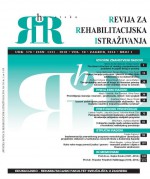Kako ruke mogu pomoći jeziku i govoru - manualni znakovi i dijete s Downovim sindromom
How can hands help language and speech – manual signs and the child with Down Syndrom
Author(s): Mirela Berglez, Ljubica PribanićSubject(s): Education
Published by: Sveučilište u Zagrebu, Edukacijsko-rehabilitacijski fakultet
Keywords: early communication; supported language development; manual signs; child with Down Syndrome
Summary/Abstract: Scientific research confirms that early use of manual signs with children who do not speak for a variety of etiological reasons brings a number of advantages: it stimulates the development of social interaction and early language abilities and extends communication functions and understanding of information, through which children collects experience and comprehension about themselves and their surrounding world. Attachment between parent and child is accentuated and clatter, crying and displeasure are decreased. The majority of children with Down Syndrome (DS) have delayed oral language development. A child with DS will sooner focus attention to visual signs than vocal expressions, which speaks in favour of encouraging social interaction with manual signs; the reception of manual signs stimulates manual expression. Through the implementation of this programme, as a part of early intervention, we wanted to verify the efficacy of signs stimulation with manual communication. We hypothesized that children will first start to use manual signs for communication purposes and afterwards, from a specific sign, a spoken word or a sentence will be developed. The readiness of parents and extended family to accept this as a means of communication crucially benefits children in acquiring language and speech as well as all other aspects of development. The programme began with ten manual signs that parents found important for communication with their child. The programme was carried out intensively for one school year in a family house, once a week for sixty minutes. It was concluded that the child, out of the eighty manual signs gestures that were gradually introduced, started using the oral language equivalents of twenty-one of these manual communication gestures after ten months of active incitement. Manual signs were a good communicative means for this child in its pre-linguistic period and it stimulated his/her oral language expression.
Journal: Hrvatska revija za rehabilitacijska istraživanja
- Issue Year: 50/2014
- Issue No: 1
- Page Range: 107-119
- Page Count: 13
- Language: Croatian

